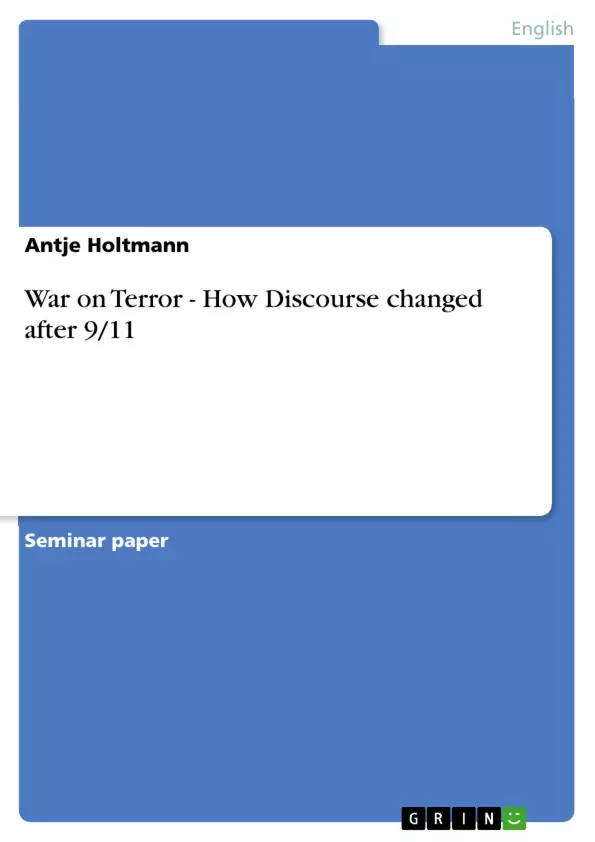[...] The discourse he (re)started, continued or resumed on “shaped public discussion and debate surrounding terrorism worldwide”. '9/11' has become a term everybody understands “in its conventional sense, as a realm of creative expression” as Daniel J. Sherman and Terry Nardin point out in their book Terror, Culture, Politics: Rethinking 9/11. Also Shana Kushner and Amy Gershkoff say that '9/11' has become an “ideograph in the sense that the historical event represents an attack on the beliefs, values, attitudes and “way of life” within the United States”. Not only in the English language '9/11' has become a “dictum” but in many others, too. In this term paper I want to take a closer look on the speech President Bush delivered on September 20, 2001 as State of the Union Address to a joint session of Congress. In my analysis I will go through the speech step by step in order to figure out the main points Bush is making. From there I want to continue with its effects and influence on the discourse about 'war on terror'. I am mainly referring to Norman Fairclough and his interpretations in Language and Globalization and also to Kevin
Coe et al. and their study No Shades of Gray. With the help of these publications I want to emphasize the impact and the aftermath of Bush's discourse as well in media as in society.
Inhaltsverzeichnis (Table of Contents)
- Introduction
- Analysis of the speech
Zielsetzung und Themenschwerpunkte (Objectives and Key Themes)
This term paper aims to analyze President Bush's State of the Union address on September 20, 2001, focusing on the key points made in the speech and their impact on the discourse about the "war on terror". The paper will explore the speech's language and structure, highlighting rhetorical devices used to shape public opinion.
- The impact of Bush's speech on public discourse and media
- The use of language to create a sense of unity and purpose
- The rhetorical construction of a dichotomy between "us" and "them"
- The significance of the "war on terror" declaration
- The influence of historical references and examples
Zusammenfassung der Kapitel (Chapter Summaries)
- Introduction: This chapter introduces the context of Bush's speech, highlighting its importance in the aftermath of the 9/11 attacks. It discusses the speech's reception in the media and its significant impact on public discourse.
- Analysis of the speech: This chapter provides a detailed analysis of Bush's speech, examining its structure, key themes, and rhetorical devices. It focuses on the recurring use of the words "terror" and "freedom" as well as the dichotomy created between "us" and "them." The chapter also explores the speech's four main questions and the central declaration of "either you are with us or you are with the terrorists."
Schlüsselwörter (Keywords)
Key terms and concepts explored in this work include: "war on terror", "terrorism", "freedom", "justice", "al Qaeda", "Taliban", "Islamic extremism", "dichotomy", "rhetoric", and "public discourse".
- Citation du texte
- Antje Holtmann (Auteur), 2010, War on Terror - How Discourse changed after 9/11, Munich, GRIN Verlag, https://www.grin.com/document/211626



